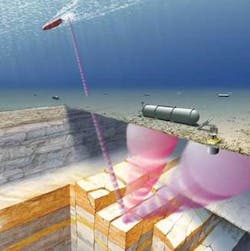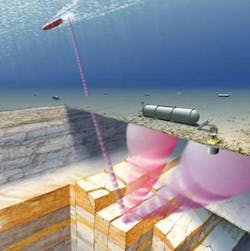Container design aids seabed system deployment
Permascand has won a $2.323-million order for containers and tubular frames for the seabed monitoring units used by SeaBed Geophysical for seismic survey purposes. Five hundred sets of containers and frames will be produced, with first deliveries due this summer.
“In fact, it’s not just a container, but a totally new concept, which we have been developing for several years together with SeaBed,” says sales engineer Thor Valsø-Jørgensen at Permascand’s Oslo facility, where the project has been developed.
The SeaBed seismic survey method involves collecting pressure and shear wave data in monitoring units placed on the seabed. Each electronic data collection unit is housed in a Permascand container, mounted in the tubular frame.
Permascand identified more than 60 functions that the container and frame assemblies must be able to perform during the operational cycle, from being transported to the installing vessel, stacked on board, lifted into the air, lowered through the sea, to installation on the seabed and subsequent retrieval. As SeaBed has a busy order book, the equipment will likely be re-used a dozen times or so a year.
However, the two companies decided not to give the equipment too long a design life, as in a few years’ time the data collection unit will probably have to be extensively redesigned. So, instead of specifying titanium, the material which Permascand usually works in, and which has a very long lifetime, they decided to use a high-strength aluminum alloy. This is substantially less expensive than titanium, but also means that the units will be light enough to be installed without the need for any buoyancy, thus saving both costs and time, says Valsø-Jørgensen.
The equipment has been designed for use in waters down to 3,000 m (9,842 ft)deep, reflecting the demands coming through from the market for SeaBed’s surveys. The previous design, which was four-five times larger and considerably heavier, was rated to 500 m (1,640 ft).
The units will be deployed on theHugin Explorer vessel, which is on long-term charter to SeaBed’s owner, Seabird Exploration. •
For more information, contact Thor Valsø-Jørgensen, Permascand. Tel +47 2250 1050, fax +47 2250 1051, [email protected], www.permascand.com

